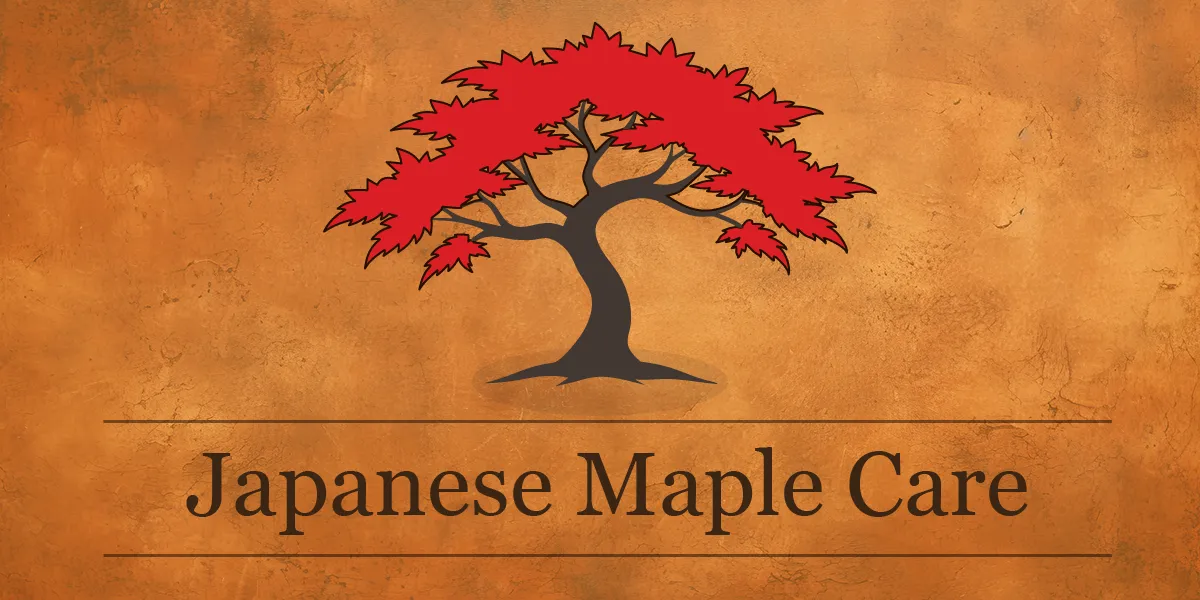Move over Canada; there’s a new maple tree in town!
Only this tree is far from new in any sense.
The graceful Japanese maple (Acer palmatum), native to Japan, Korea, and China, has been cultivated for centuries in Asia. It was introduced to the USA following the Perry Expedition of 1854, which opened Japan to Western trade.
“Momiji ” are celebrated in traditional Japanese design for their symbolic connection to tranquility and beauty. Their slender, almost delicate branches and brilliant autumn foliage can raise the aesthetics of any landscape, including yours.
Will they grow in Southern California? You betcha, but they may struggle in the hotter inland areas. This blog will cover what you need to know for successful care.
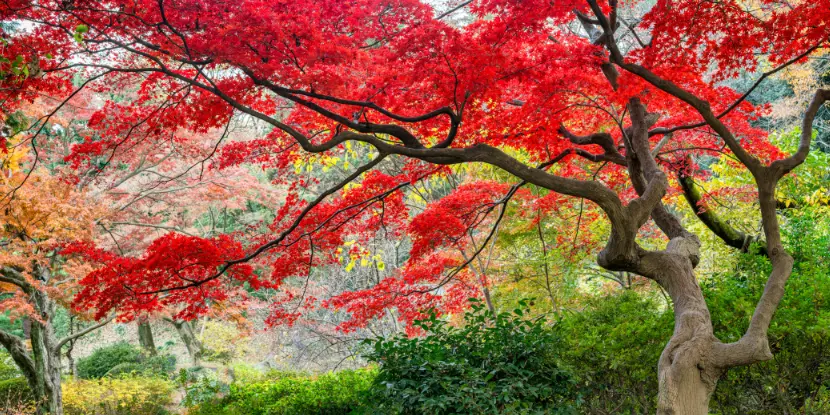
Red Japanese maple tree during autumn in Japan.
Choosing Your Variety
- Emperor One (Acer palmatum ‘Emperor 1’): Has deep red foliage that holds color throughout the summer. It’s more heat-tolerant than other red-leafed cultivars, making it suitable for warmer climates. Emperor One can reach a height of 15 feet and a width of 12 feet.
- Bloodgood (Acer palmatum ‘Bloodgood’): An adaptable and resilient variety with deep burgundy leaves that turn bright red in the fall. It can tolerate full sun, though some afternoon shade can help prevent leaf scorch. This variety typically grows to about 20 feet tall and wide.
- Sango Kaku (Acer palmatum ‘Sango Kaku’): Also known as “coral bark” maple, this medium-sized tree has striking coral-colored branches in winter and green leaves that turn golden yellow in fall. It prefers partial shade in hotter climates and can grow up to 25 feet tall.
- Seiryu (Acer palmatum ‘Seiryu’): Unique among Japanese maples, Seiryu is an upright, dissected form with finely cut green foliage that turns golden-yellow to red in the fall. It is more sun-tolerant than other lace-leaf types and can reach heights of 10 to 15 feet.
- Tamukeyama (Acer palmatum ‘Tamukeyama’): An old variety, Tamukeyama features cascading branches with deep red to purple foliage that holds its color well, even in the heat. It’s more tolerant of sun and heat than most other dissected forms and typically grows to about 6 to 8 feet tall and broader in spread.

Japanese maple in a zen garden.
Optimal Growing Conditions
Light
- Japanese maples prefer dappled sunlight or partial shade.
- Direct, harsh sunlight — especially at the peak of California summers — can scorch their delicate leaves.
Temperature
- These trees can handle mild California winters but struggle in intense heat.
- Plant them in locations with some cooling afternoon shade, especially in hotter regions like inland valleys.
Soil
- Japanese maples need well-draining, slightly acidic soil.
- A sandy or loamy mix works well in California.
- Avoid overly alkaline soils, which can hinder nutrient absorption.
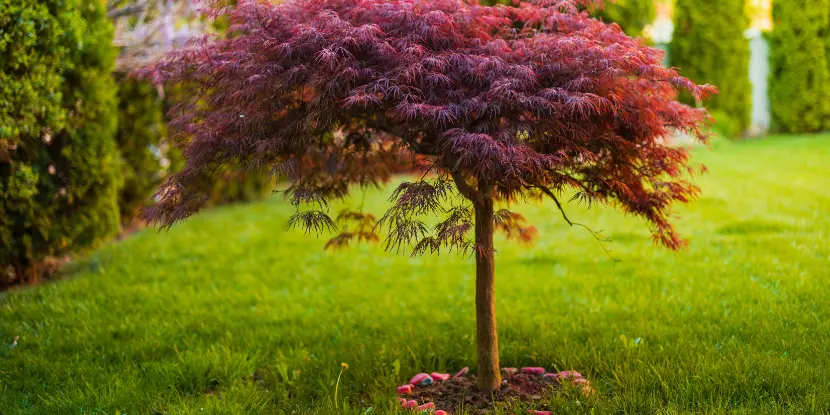
The reddish foliage of the weeping Laceleaf Japanese maple tree in a garden.
Steps for Planting Japanese Maple
1. Choose the Right Location
- Look for a spot with morning sunlight and afternoon shade.
- Ensure good air circulation, but avoid windy locations, which can dry out leaves.
2. Prepare the Soil
- Test your soil’s pH to ensure it’s slightly acidic (around 6.0 to 6.5 is ideal).
- Amend the soil with compost or peat moss to improve drainage and nutrition.
3. Dig the Hole
- Make the hole twice as wide as the root ball but no deeper.
- Loosen the soil at the bottom of the hole to encourage root growth.
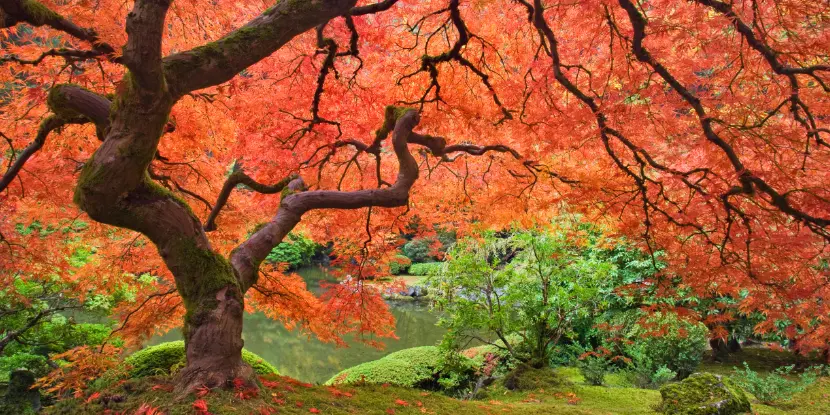
Japanese maple tree next to pond at Portland Japanese Garden.
4. Planting
- Carefully remove the tree from its container and gently loosen tangled roots before placing it in the hole.
- Position it so that the top of the root ball is level with or slightly above ground level.
5. Backfill & Water
- Fill around the roots with a mix of soil and compost, pressing lightly to eliminate air pockets.
- Water thoroughly after planting and regularly thereafter, keeping the soil moist but not waterlogged.
6. Mulch Around the Base
- Apply a 2-3 inch layer of mulch around the tree, keeping it 2 inches from the trunk. This helps retain moisture and regulate soil temperature.
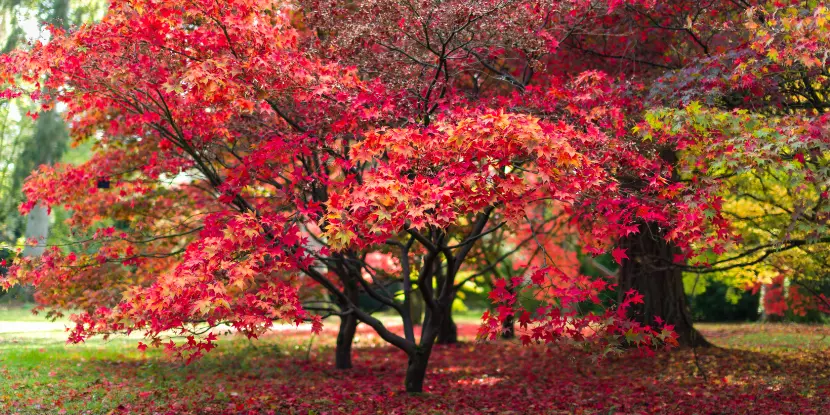
Japanese maple tree leaves in autumn colors.
Maintaining Your Japanese Maple
Watering
Newly Planted Trees
- Water regularly to help establish roots.
- Light, frequent watering is ideal for the first year.
Established Trees
- Deep water once a week, especially during hot summers.
- Adjust based on rainfall and soil moisture levels.
Tip: Use drip irrigation or a soaker hose for consistent moisture without flooding the soil.

Close-up of red leaves on a Japanese maple.
Fertilizer
- Use a slow-release, low-nitrogen fertilizer formulated for acid-loving plants.
- Apply in early spring before new growth begins, then again in midsummer if necessary.
- Avoid over-fertilizing. Japanese maples like to grow at their own pace.
Pests & Diseases
Japanese maples aren’t prone to many pests or diseases, but here’s what to watch for:
- Aphids: These tiny pests can be washed off with a hose or treated with insecticidal soap.
- Verticillium Wilt: A soil-borne fungus that can damage roots. Ensure consistent care to keep your tree healthy.
- Leaf Scorch: Often caused by too much sun or insufficient water. Provide shade and maintain consistent watering.
Pruning
- Prune during the dormant season (late winter) to shape the tree and remove dead or crossing branches.
- Avoid heavy pruning, which can stress the tree. Instead, aim to maintain its natural form.
- Use sharp, clean tools to prevent damage or disease.
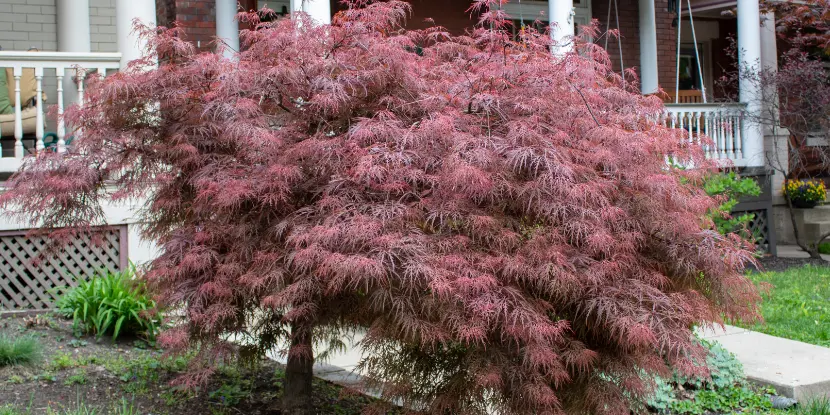
Crimson queen Japanese maple forming a rounded dome with slightly weeping branches.
FAQs: Japanese Maple Care
Q: Can I grow Japanese maples in pots?
Dwarf varieties like ‘Shaina’ or ‘Koto No Ito’ are perfect for container planting. Use a well-draining potting mix and ensure the container has drainage holes.
Q: When is the best time to plant?
Late fall or early spring is the ideal time to plant Japanese maples. The weather is milder, and the tree can establish roots before the peak growing season.
Q: Do Japanese maples grow fast?
Japanese maples grow moderately, 1 to 2 feet per year, depending on the variety and growing conditions.
Q: Can Japanese maples handle full sun?
Some varieties, like ‘Bloodgood,’ can tolerate more sun than others, but they’ll still need adequate water and protection during the hottest times.
Q: How do I protect my Japanese maple during heatwaves?
Provide shade with a temporary tarp or shade cloth and water deeply in the early mornings to keep the roots hydrated and cool.
Q: How often should I repot a potted Japanese maple?
Repot every two to three years or when the roots become root-bound. Use fresh potting soil and a slightly larger container to promote healthy growth.
Q: Can I prune Japanese maples in the summer?
Light pruning can be done in late summer to remove minor growth or damaged leaves, but avoid heavy pruning, which can stress the tree during its active growing season. The best time for significant pruning is during late winter when the tree is dormant.
Q: What companion plants work well with Japanese maples?
Japanese maples pair beautifully with shade-loving plants like ferns, hostas, and rhododendrons. These companions thrive in similar soil and light conditions, creating a harmonious landscape design.

